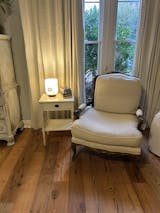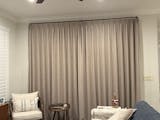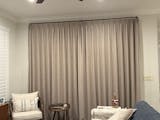The Importance of Lighting in Interior Designs
By Gargi Joglekar
“While it's easy to focus on furniture and decor, without proper lighting, even the most beautifully designed rooms can feel flat.” - Gargi Joglekar
How Lighting Transformed My Home (and Why It’s Essential in Yours)
When I think about what truly makes a home feel complete, lighting is one of the first things that comes to mind. It’s such a crucial element of interior design, yet it often gets overlooked. I remember when I was renovating my own home, I spent so much time choosing the perfect furniture and fabrics, but it wasn’t until I adjusted the lighting that everything really came together. Without proper lighting, even the most thoughtfully designed spaces can feel flat or incomplete.
Lighting does so much more than simply illuminate a room. It sets the mood, creates ambiance, highlights architectural features, and can even affect how we feel in our homes. For example, in my dining room, I swapped out a bright, sterile overhead light for a soft, dimmable chandelier, and the entire space instantly felt more intimate and inviting. If you've ever walked into a beautifully decorated room that felt cold or harsh, it's likely because the lighting wasn't quite right. Conversely, when lighting is done well, it transforms a space, making it feel warm, inviting, and perfectly tailored to your needs.
1. Lighting Layers: The Key to a Well-Designed Space
One of the most important principles I focus on when designing a space is the concept of layering light. A single overhead fixture simply won’t do the trick. You want to incorporate different types of lighting—ambient, task, and accent—throughout your home to create a well-balanced and functional environment.
I learned this firsthand when I was working on my kitchen renovation. I initially thought overhead recessed lighting would be enough, but once I added under-cabinet task lighting, it made a world of difference while prepping meals. Not only was it more practical, but it also added a polished, functional element to the space that I didn’t realize I was missing.
- Ambient lighting is your general light source. This is usually provided by ceiling fixtures, recessed lights, or large pendants, and it ensures that the room is well-lit overall. But ambient lighting on its own can feel a little flat, which is where the other layers come into play.
- Task lighting is focused on specific areas where you need concentrated light. Think of under-cabinet lighting in your kitchen, a reading lamp by your favorite chair, or sconces in the bathroom. Task lighting is all about function, but it doesn’t have to sacrifice style. I love using stylish lamps on my bedside tables for a soft glow that also makes reading in bed a treat.
- Accent lighting is what I call the “jewelry” of the room. It’s what you use to highlight artwork, architectural details, or even a beautiful textured wall. When I added wall sconces to highlight the texture of my living room’s accent wall, it completely elevated the space, giving it a refined and layered look.
2. Why Do Different Fixtures Matter?
Using different light fixtures throughout your home is essential because every room serves a different purpose, and each requires a unique lighting approach. When I was working on my bedroom, for example, I wanted to create a calming atmosphere, so I opted for dimmable bedside sconces paired with soft ambient lighting from a modern chandelier. Here’s how I approach lighting in various rooms:
- Living room: You’ll want a combination of ambient lighting, like a beautiful chandelier or flush-mount, paired with task lighting in the form of table lamps or floor lamps. Dimmable fixtures are ideal here, so you can adjust the light depending on the time of day or the mood you're aiming to create.

- Kitchen: This is where task lighting becomes crucial. Overhead lighting paired with under-cabinet lights ensures you have the visibility needed for cooking, while pendants over an island can provide both functional light and a stylish focal point.

- Bedroom: The lighting should feel soft and inviting. I always recommend bedside lamps or sconces that offer a warm glow. You can still include ambient light for functionality, but dimmable fixtures are key to creating a relaxing atmosphere at the end of the day.

- Bathrooms: Good lighting here is essential, especially around mirrors where you’ll need task lighting for daily grooming. I learned the hard way that overhead lighting alone wasn’t cutting it for tasks like applying makeup, so I added vertical sconces beside the mirror, and the difference was incredible.

- Hallways or staircases: Accent lighting, like wall sconces or picture lights, can add interest to what are often transitional, overlooked spaces. I installed sleek sconces in my hallway to not only brighten the space but also showcase some of my favorite artwork.

3. Lighting as a Design Feature
Beyond the functional benefits, lighting fixtures can also act as statement pieces in your home. I still remember the moment I found the perfect chandelier for my dining room—it became a true centerpiece that guests always comment on. A stunning chandelier, a unique pendant, or a beautifully designed floor lamp can double as art and a conversation starter.
Lighting isn’t just about illumination; it’s about creating an experience in every room of your home. The right lighting can evoke a sense of calm in the bedroom, productivity in the office, or warmth and connection in the dining room.
So lighting is an essential yet often underestimated element in interior design. It has the power to elevate a room, influence the atmosphere, and make a space feel truly personalized. By layering different types of lighting and choosing fixtures that enhance both function and style, you can transform your home into a place that feels cohesive, comfortable, and visually stunning.
If you haven’t taken a fresh look at your home’s lighting lately, it may be time to rethink how different fixtures can bring new life to your space. I know when I did; it made all the difference!

Summary of the article: The Importance of Lighting in Interior Designs
In this article, I am sharing things I came to realize while renovating my own home—how essential lighting is to creating a space that feels complete. While it's easy to focus on furniture and decor, without proper lighting, even the most beautifully designed rooms can feel flat. For instance, swapping out a bright overhead light in my dining room for a soft, dimmable chandelier transformed the atmosphere, making the space feel more intimate and inviting.
I discuss the importance of layering different types of lighting—ambient, task, and accent—to achieve a balanced and functional design. This was something I learned firsthand when I added under-cabinet lights in my kitchen during renovation. It enhanced both practicality and style, showing me how even small lighting changes can make a big impact. I also touch on how different light fixtures serve unique purposes in various rooms and how they can become statement pieces that elevate your home's overall aesthetic.
Ultimately, lighting isn't just about illumination; it’s about creating an experience. Whether it's calming your bedroom, boosting productivity in your office, or making your dining room feel warm and inviting, the right lighting has the power to transform your home.
*All photographs credit: Gargi Joglekar
ABOUT WRITER




























Leave a comment